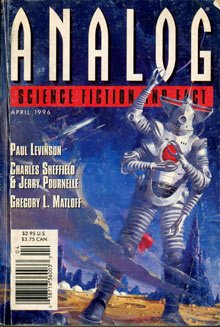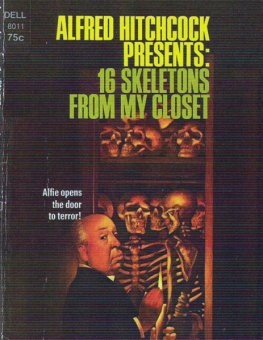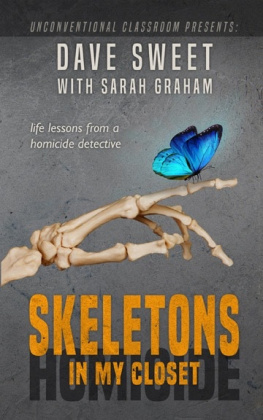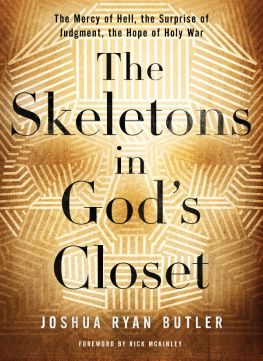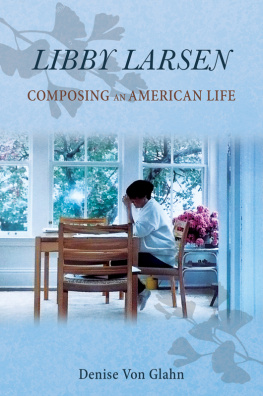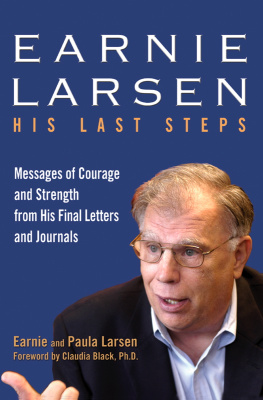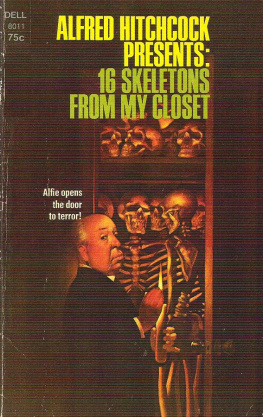Copyright 2000 by Princeton University Press
Published by Princeton University Press, 41 William Street,
Princeton, New Jersey 08540
In the United Kingdom: Princeton University Press,
3 Market Place, Woodstock, Oxfordshire 0X20 1SY
All Rights Reserved
Third printing, and first paperback printing, 2002
Paperback ISBN 0-691-09284-2
The Library of Congress has cataloged the cloth edition of this book as follows
Larsen, Clark Spencer.
Skeletons in our closet: revealing our past through
bioarchaeology / Clark Spencer Larsen.
p. cm.
Includes bibliographical references and index.
ISBN 0-691-00490-0 (alk. paper)
1. Human remains (Archaeology). 2. Human skeletonAnalysis.
3. PopulationHistory. 4. Human geography. I. Title.
CC77.B8 L375 2000
930.1dc21 99-053724
British Library Cataloging-in-Publication Data is available
This book has been composed in Janson
https://press.princeton.edu/
eISBN: 978-0-691-21801-4
R0
PREFACE
I HAVE always been interested in just about anything ancient, especially peopletheir activities, the difficulty of their lifestyles, what they ate, how they lived, and what their health was like. As a child, I was a frequent visitor with my family to the Homestead National Monumentthe site of the first 160-acre land claim following passage of legislation signed by President Lincoln in 1862 located a few miles outside my hometown of Beatrice, Nebraska. Surrounded by seemingly endless cornfields in the rolling and nearly treeless terrain of the southeastern part of the state, Beatrice has few draws, but the Homestead has a wonderful little museum containing all types of pioneer and Indian artifacts. From my many visits to the museum, I channeled my interest in old things into archaeology, a branch of the field of anthropology; I wanted to become an anthropologist.
While I was in high school, I met archaeologist Clark Mallam, who was about to start teaching at Luther College in Decorah, Iowa. Clark had grown up in Wymore, a small town just down the road from Beatrice, and he knew a great deal about local history and archaeology. He offered me some advice: Get myself onto an archaeological field project. He suggested that I contact Carl Jones, staff archaeologist for the Nebraska State Historical Society in Lincoln. I wrote to Carl, who sent me an application and an accompanying letter saying that he was hiring a crew to work for the summer at the site of an early frontier fortFort Atkinson located on the Missouri River, north of Omaha. During its occupation in the 1820s, this was the most remote American military outpost on the western frontier, and served as the largest United States garrison at the time. I completed and returned the application, and much to my delight, Carl hired me. Soon after my graduation from high school in June 1970 ,I joined the other members of the crew in Lincoln for the trip to the site.
After setting up camp on a high bluff overlooking the Missouri River valley, our crew began work, mostly digging in the floors and foundations of the military barracks located along the perimeter of the fort palisade. The work that summer turned out to be tough stuffthe physical labor was backbreaking, the hot and humid weather was unrelenting, and our discoveries were unexciting (to the other members of the crew, anyway), consisting mostly of old nails, bottle fragments, and bricks. The tedium of the work was inconsequential to me, howeverI was doing archaeology.
One event stood out that summer that was to help direct my future interest in ancient bones. Halfway through the eight-week field season, on an especially miserably hot day in mid-July, a crew member working next to me unearthed some old bones with his trowel in an area located adjacent to the foundation to the fort barracks. Carl carefully examined the find, identifying the bones as part of a human skull. He pointed out subtle features that indicated the age, sex, and race of the individual; the skull was from a young adult female, probably of European ancestry. Carl speculated that the woman had been either a spouse of one of the officers or, perhaps, one of the many laundresses who lived and worked at the fort. Whoever she was, I was transfixed by the presence of these remains that were staring up at me. Here were the bones of someone who had once been alive, and whose skeleton at least part of it, anywayhad ended up inside the walls of the fort. What were her remains doing there in the first place? Her location within the fort itself was puzzling to us, especially because the official cemetery for soldiers and other persons was located well outside the fort. Moreover, why were only parts of her skull present, and not the rest of her skeleton? Was there more to learn about this person besides her age, sex, and race? Did she die of some disease, perhaps one of the cholera epidemics that passed through the fort periodically? How did her lifestyle differ from my lifestyle as a twentieth-century American? Because I was then merely a young student, I did not yet have the tools to investigate these questions further, but my imagination had been ignited.
My work at Fort Atkinson and the discovery of human remains there fostered my growing fascination with archaeology, and it kindled my interest in physical anthropology, the branch of anthropology that includes the study of ancient bones and teeth. I knew that people made a living from doing archaeology, but I began to wonder if I could do both archaeology and physical anthropology, combining two branches of anthropology.
With the completion of my first field experience at Fort Atkinson, I enrolled as an anthropology major at Kansas State University. In my freshman year, my professor and mentor, Patricia OBrien, suggested that I take a course in human osteology from William M. Bass. Bass, one of the leaders in the field, was then on leave from the University of Kansas and was a visiting professor at Kansas State before beginning his new appointment as head of the anthropology department at the University of Tennessee. I signed up for the course, and within a few short months, I learned a great deal about basic bone and tooth identification, how to age and sex skeletons, and some of the fundamentals of the field that would later become known as bioarchaeology. Moreover, a project in his class led to my first scientific publication, co-authored with a classmate.
Bass must have been pleased with what I had accomplished in his osteology course. He secured a place for me on an archaeological field project for the upcoming summer excavating skeletons near Mobridge, South Dakota, working under the direction of two prominent Smithsonian Institution scientists, Douglas H. Ubelaker and T. Dale Stewart. I could not believe my good fortune. Studying with Bass in the classroom and digging with Ubelaker and Stewart in the field, all within a period of a few months, were too good to be true. These three individualsBass, Ubelaker, and Stewartwere among the most knowledgeable physical anthropologists in the world about the excavation and study of archaeological human skeletal remains. By the time I returned from the field for the fall term, my interest in studying human bones and teeth was firmly entrenched. Little did I realize, at age nineteen, the importance of these early formative experiences, setting the stage not just for my interests that would eventually lead to a doctoral dissertation at the University of Michigan, but also for the course of my entire life.





